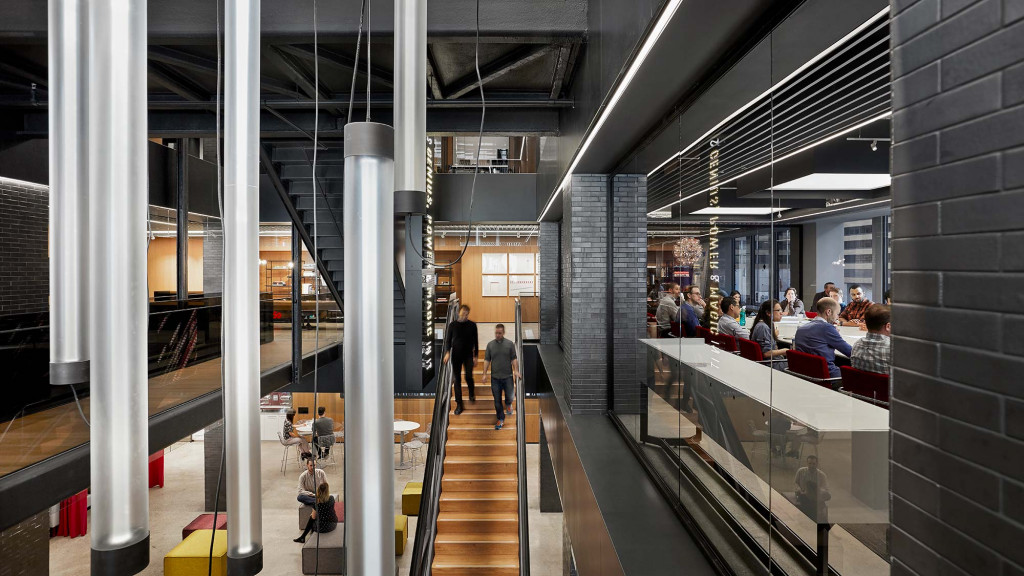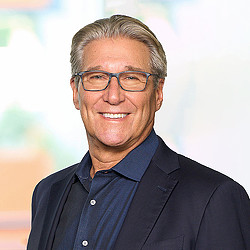Human Experience Is the Future of Design
By Andy Cohen, Diane Hoskins
We believe human experience is the future of design. People are the one constant in this era of dramatic technological change, demographic shifts, global volatility and climate change. This historic confluence of change means that, as designers, we must re-think and re-invent how people experience every aspect of their lives and the places and spaces that they live in. More than ever before, there is an opportunity to create a better world through people-centered design. We are seeing our design practice at Gensler focusing on how the places we create enhance human experiences that connect people, communities, organizations, families and friends.
Experience is vital at every scale, from the individual to the city. Over the past several years, we know that more and more people are living in cities and metropolitan areas. In fact, more than 54 percent of the world’s population live in cities of all scales. The need for livable and people-centric urban areas is becoming essential for the social, economic and physical well-being of people around the world. Approaching design with a holistic 360-degree understanding of live, work and play has the potential to create places where people thrive. Innovation and robust economic potential can be realized in these types of urban areas as well. This virtuous cycle is globally important, as cities are drivers of innovation around the globe.
Last year, we gathered a diverse cross-section of Gensler’s clients to talk about the future. These individuals represented all types of companies and organizations and their perspectives ranged from concern about the pace of change to how to harness the extreme impact of technology. Their input and perspective helped us understand that the design we create with our clients and communities must deliver experiences that are relevant in our rapidly changing world. Our 2017 Gensler Design Forecast builds on the dialogue we are having with our clients and combines it with our proprietary research and analytical trend analysis.
As a culmination of this insight, we are forecasting four key trends that will impact design going forward: Designing the experience-driven life, delivering tomorrow’s livable cities, designing for everyday impact and making design more responsive. Below are highlights about each of these trends. In addition, we invite you to read the entire publication online .
We believe in designing for the experience-driven life
The best experiences anticipate people’s needs, tap into their emotions and engage the senses. People are looking for these kinds of experiences to connect them to their communities, with interactive spaces creating something called the third place. These are places where people can gather to meet with colleagues and friends and contribute to the vitality of their community. Retailers are increasingly looking to create this kind of experience with their projects, and this is having a transformative impact on people’s lives.
Cadillac House in New York City’s vibrant arts and cultural district of SoHo is an example of the kind of experienced-centered project that is setting the standard for a new paradigm in interactive, community-oriented design. Cadillac House is “dedicated to what’s new and next in the arts, culture, fashion and culinary world,” and features a contemporary art gallery, retail pop-ups by up and coming designers, food from local restaurateurs and the latest Cadillac vehicles and technology.
Designing for an experience-driven life also means operating in a values-based world. Brands with strong values build strong ties to their mission through design, and organizations can use design to embody their mission in ways that attract, retain and motivate workers to innovate. Workplace experience is the key for companies seeking to make their purpose relevant and emotionally engaging to employees, and the physical place plays and integral role in shaping that experience.
Projects like Etsy’s corporate headquarters in Brooklyn exemplify the role that design can play in centering an organization’s core values in the physical workplace. Etsy, which has a mission of reimagining commerce in ways that build a more fulfilling and lasting world, is known for being a center of today’s maker movement, specializing in unique, handmade and vintage goods from all over the world. Etsy’s workplace reflects this ethos through using locally sourced, highly sustainable materials to reposition an old industrial building into a highly creative, one of a kind space that is reflective of its organizational culture.
Measuring design’s behavioral impact helps gauge how specific features and attributes contribute. The Gensler Experience IndexSM will give our designers and clients this behavioral edge.
We are passionate about delivering tomorrow’s livable cities
As cities and organizations focus on reinventing themselves as centers of experience and human ingenuity in the 21st century, they are also responding to serious environmental and demographic changes. Global cities are being reinvented to accommodate new generations of urban dwellers and swelling populations while at the same time working to respond to one of the most pressing and important issues of our time—climate change.
Design has an amazing capacity to help create sustainable, resilient and healthy communities, and we can get there through focusing on livability. According the International Energy Association, the building sector is the largest source of energy consumption, globally, and the built environment is responsible for more than one-third of greenhouse gas emissions. Achieving the goals set by the U.N.’s Paris Agreement will require a greater than 77 percent reduction in total emissions attributed to the buildings sector by mid-century. Failing to reach these goals will make it impossible to prevent temperature rise greater than 2 degrees Celsius, the upper limits of the internationally agreed upon safe zone for climate change.
Fortunately, many of the issues posed by both climate change and demographic growth can be addressed with the same solutions. Focusing on creating transit oriented urban places allows people to rely less on cars while also becoming more integrated into their cities and communities. Mixed-use development helps create pedestrian friendly communities that foster a sense of proximity so people can live, work and play without traveling long distances. Creatively repurposing existing buildings allows communities to maintain their historic character, lowers the environmental impact of new development and brings economic revitalization to new areas.
The repositioning of the Milwaukee Post Office demonstrates the power of this approach to urban livability. The mixed-use redevelopment of the old post office will inject new life into a previously under-utilized area, featuring a new riverfront promenade and pedestrian bridge connecting people on both sides of the water. The project will add stores, restaurants, and creative office space near public transit—raising density, economic activity and social connection in a walkable, sustainable way.
We are focused on designing for everyday impact
Experience-driven design plays a powerful role in everyday life, helping create new levels of inclusivity, diversity, stewardship and integration as people grapple with the complexities of 21st century living. Design can radically improve the way we learn, the way we get from place to place and the way we work by making the world more responsive to the needs of people.
The nature of work is evolving and people’s expectations of their workplace experience are changing to reflect that. Economic value is increasingly tied to innovation in fields like technology, healthcare and engineering, and organizations need to hone their ability to out-innovate their competition to thrive. Gensler’s Workplace Survey demonstrated that workplace design is a key driver of organizational innovation. The Workplace Survey found a statistical link between the quality and functionality of the workplace and the level of innovation employees attribute to their organization. High performing workplaces prioritize individual and group work, creating an innovation ecosystem that shapes people’s experiences and their perceptions of their broader organization.
GE’s new waterfront headquarters in Boston exemplifies this shift. The campus has extensive indoor and outdoor space that is geared toward engaging the Boston ecosystem in idea generation, creating solutions that can have a global impact in the process. Located close to the waterfront, GE integrates the rich history and scenery of the Boston harbor into the public spaces on its campus while also paying homage to the company’s own rich history as a primary engine for modern innovation and discovery. Its indoor common areas feature maker spaces, a bistro and a coworking café that encourage networking and the exchange of ideas.
We are dedicated to making design more responsive
Major changes to the world around us create new challenges, and design needs to evolve to be responsive to these pressures. New technological innovation in the field of design allows us to create projects that would have been impossible a generation ago, and which have the capacity to deliver new levels of performance in the built environment. Technologies like 3D printing, prefabrication, virtual reality and computational design are allowing for new levels of innovation that can make a difference.
Gensler’s work on the 3D printed office in Dubai—the first fully functional 3D office in the world—is indicative of the exciting new frontiers opening across the design field. The project paves the way for a future where 3D printing can help resolve pressing environmental and urbanization issues. Highly customized spaces developed using 3D printing and prefabrication technology can have a major impact on issues arising from rapid urbanization, and they could do so while reducing the costs of highly complex projects.
Check out the 2017 Gensler Design Forecast
These are just some of the insights covered in our 2017 Design Forecast, which situates our passion for design and a making a positive impact on human experience within the challenges most impacting the world today. We hope that you will find it useful as an exploration of the exciting new possibilities opening up in a rapidly changing world, as well as a source of inspiration going forward.


